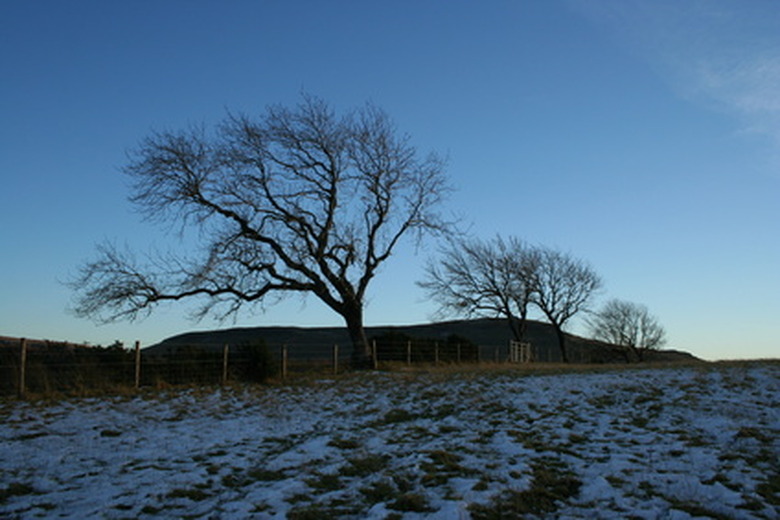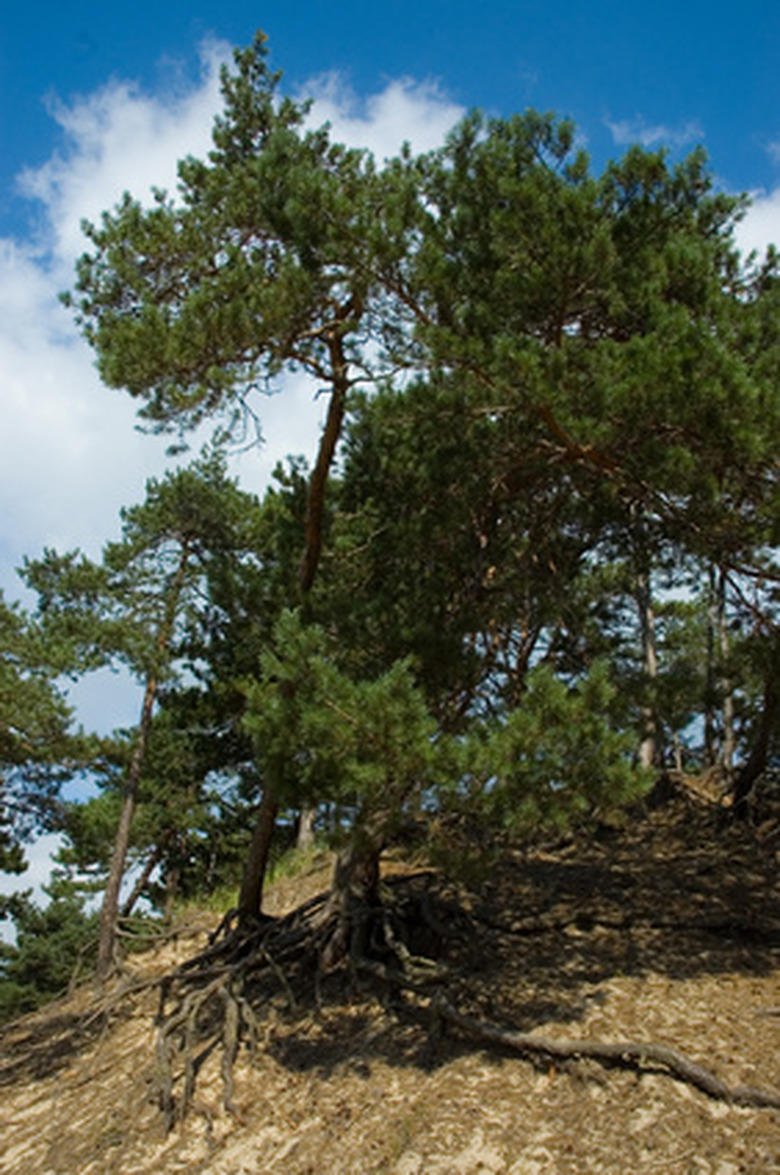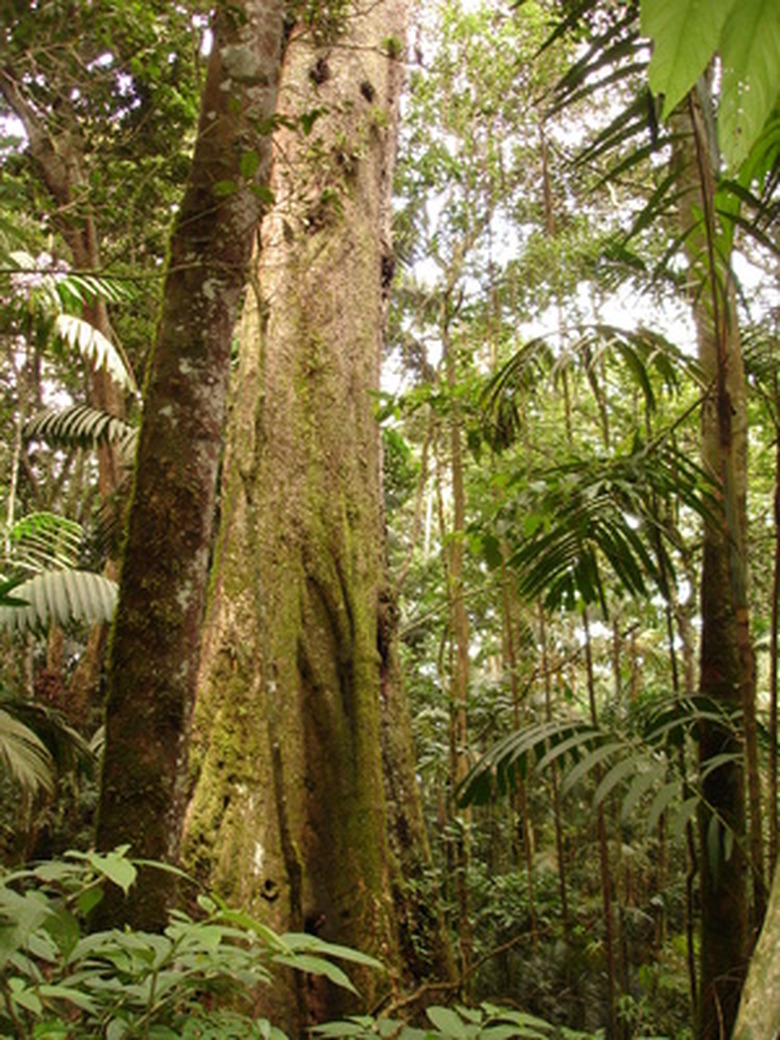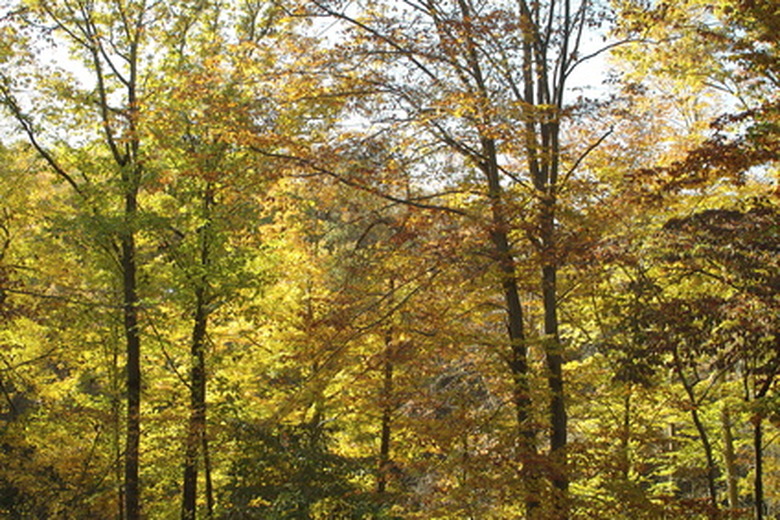Difference Between Evergreen & Deciduous Trees
To residents of much of North America, evergreen and deciduous trees are sometimes taken as synonymous with "conifers" and "hardwoods." But that strict association is incorrect: there are deciduous conifers and evergreen broad-leafed trees, not to mention all manner of "semi-evergreen" and "semi-deciduous" forms to confuse the situation. The issue deals with two distinct approaches trees (and other plants) take to managing their foliage.
Evergreen vs. Deciduous
Evergreen trees are those that maintain foliage on the twig year-round. Deciduous trees are those that drop their leaves for some part of the year. Toward the poles, these different life strategies tend to be oriented around the effects of winter: short durations of sunlight, cold temperatures, snow and ice. But in the subtropics and tropics, ecosystems that experience reliable dry seasons may host so-called drought-deciduous trees that shed their leaves in response to the threat of dessication. Species in between these categories may be deciduous at one latitude and evergreen at another, or may entirely cycle through foliage within a year but always have some live leaves on the branch. In any case, deciduous trees avoid some of the challenges posed by wintry or dry conditions that evergreens must endure, while expending the energy to regrow their photosynthetic organs every year; evergreens can be quick to take advantage of unexpected bouts of rain or an early spring.
- To residents of much of North America, evergreen and deciduous trees are sometimes taken as synonymous with "conifers" and "hardwoods." In any case, deciduous trees avoid some of the challenges posed by wintry or dry conditions that evergreens must endure, while expending the energy to regrow their photosynthetic organs every year; evergreens can be quick to take advantage of unexpected bouts of rain or an early spring.
The Conifers
Most species of conifer, including pines, firs, spruce, junipers and cypresses, are evergreen trees. Their foliage tends look radically different from those of broad-leaved trees. Members of the pine family have needle-like structures for their leaves, ranging from small and densely packed in firs and spruces, to long and graceful in the pines. Most conifers in the cypress family show minuscule, scale-like leaves wrapped tightly against the twig. Conifers called larches, common to boreal and mountain forests of North America and Eurasia, buck the trend by being deciduous, as do the dawn redwood and baldcypresses.
Evergreen Broad-leaved Trees
Many broad-leaved trees in milder climates are evergreen. Moist tropical forests include a host of them, from palms to mahoganies. Fig trees are some of the most widespread, with representatives in all the world's tropical and subtropical regions. Most are evergreen. Other evergreen broad-leafs inhabit drier, Mediterranean climates, characterized by winter rainfall and summer droughts. For example, manzanitas of the U.S. west coast have tough, rubbery leaves they retain all year, allowing them to take advantage of winter rains unavailable to deciduous associates like oaks and big-leaf maples.
- Most species of conifer, including pines, firs, spruce, junipers and cypresses, are evergreen trees.
- Other evergreen broad-leafs inhabit drier, Mediterranean climates, characterized by winter rainfall and summer droughts.
Deciduous Broad-leaved Trees
But deciduous broad-leaved trees are also supremely successful: in certain climates, particularly the temperate latitudes, they often dominate large-scale forested ecosystems. The temperate deciduous forests of the eastern U.S., much of Europe and eastern Asia are largely defined by oaks, maples, beeches, birches and other deciduous broad-leafs that shed their foliage during the winter to avoid water loss and freezing damage. In subtropical and tropical areas experiencing distinct wet and dry seasons, deciduous broad-leafs employ the same strategy to concentrate their growth during the former period.
References
- "Trees: Their Natural History"; Peter Thomas; 2000
- "A Sierra Club Naturalist's Guide to the Pacific Northwest"; S. Whitney; 1989
- "Woodland Habitats"; Helen J. Read, Mark Frater; 1999
- "The Sibley Guide to Trees"; David A. Sibley; 2009



